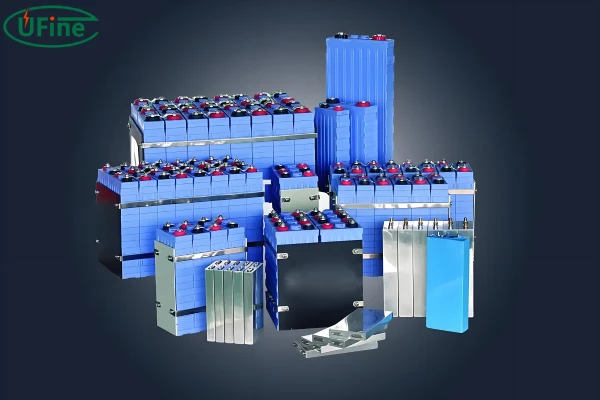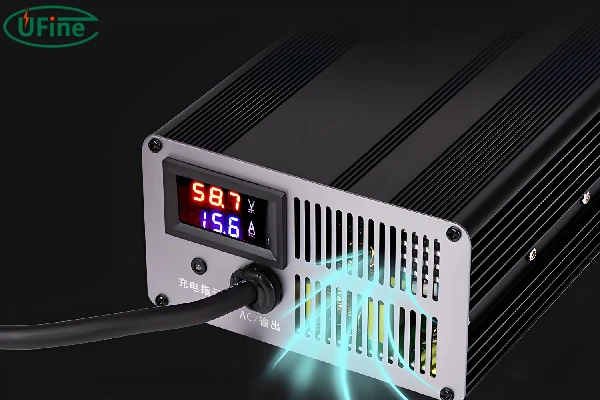Selecting the right charger for your LiFePO4 batteries is crucial for maintaining their performance and longevity. Let’s dive into everything you need to know about choosing the best LiFePO4 charger, covering various types, prices, and tips for correct charging. Ready? Let’s get started!
LiFePO4 batteries, also known as lithium iron phosphate batteries, are popular due to their stability, safety, and long lifespan. However, to fully benefit from these advantages, using the correct charger is essential. The right charger ensures that your battery is charged safely and efficiently, maximizing its performance and lifespan. So, how do you choose the best LiFePO4 charger? We’ve got you covered!
Part 1. Do you need a special charger for LiFePO4 batteries?
Yes, you definitely do. LiFePO4 batteries require chargers specifically designed for their unique chemistry. Using a charger meant for a different type of battery can damage your LiFePO4 battery or reduce its lifespan. A LiFePO4 charger manages the charging process, ensuring the battery is charged safely and efficiently.
Part 2. LiFePO4 charger types
12V LiFePO4 Battery Charger
These chargers are perfect for smaller applications like scooters, small solar systems, and backup power supplies. They typically provide a charging current of around 10-20 amps, ensuring a safe and steady charge. So, if you have a small off-grid solar system, this is your go-to charger. They are compact, lightweight, and often come with various safety features to prevent overcharging and overheating. Some popular brands include NOCO, Battery Tender, and Victron Energy. Prices typically range from $30 to $100, depending on the brand and features.
24V LiFePO4 Battery Charger
Suitable for larger systems such as electric bikes, golf carts, and more extensive solar setups. These chargers usually deliver a higher current, around 10-30 amps, catering to the increased capacity of 24V batteries. Imagine cruising around on your electric bike with a fully charged battery! They often come with advanced features like temperature compensation and multi-stage charging to ensure optimal battery health. Well-known brands include OptiMate, CTEK, and AIMS Power. Prices for these chargers typically range from $50 to $150.
36V LiFePO4 Battery Charger
These chargers are commonly used for mid-range electric vehicles and larger solar installations. They offer charging currents in the range of 15-25 amps, efficiently handling the higher voltage requirements. Think about your golf cart running smoothly with the right charger. These chargers are designed to provide consistent power delivery and often include features such as short-circuit protection and reverse polarity protection. Popular brands include Delta-Q, Thunderstruck Motors, and Grin Technologies. Prices generally range from $70 to $200.
48V LiFePO4 Battery Charger
Designed for high-power applications like electric cars, industrial machinery, and significant solar energy storage systems. They typically provide currents from 10-50 amps, ensuring that even large batteries are charged safely and quickly. Perfect for an industrial forklift or an electric car. These chargers often come with programmable settings and remote monitoring capabilities to provide detailed information about the charging process. Leading brands include Elcon, Chargery, and ThunderSky. Prices typically range from $100 to $300.
Part 3. LiFePO4 charger price
Now, let’s talk money. The price of LiFePO4 chargers varies based on the type and specifications. Here’s a general price range for different types of chargers:
- 12V LiFePO4 Battery Charger: $30 – $100
- 24V LiFePO4 Battery Charger: $50 – $150
- 36V LiFePO4 Battery Charger: $70 – $200
- 48V LiFePO4 Battery Charger: $100 – $300
Higher-quality chargers may cost more, but they offer better safety features and efficiency, making them a worthwhile investment. So, while it might be tempting to go for a cheaper option, investing in a quality charger can save you money in the long run by prolonging your battery’s lifespan. It’s important to consider not only the initial cost but also the potential savings from extended battery life and reduced maintenance costs.
Part 4. LiFePO4 charge voltage
Understanding the charge voltage is critical for maintaining the health and longevity of LiFePO4 batteries. Here’s a detailed look:
- 12V LiFePO4 Battery: Typically, the charging voltage ranges from 14.4V to 14.6V. Once fully charged, the voltage should drop to around 13.6V to 13.8V. It’s crucial to avoid exceeding these voltages to prevent overcharging.
- 24V LiFePO4 Battery: These batteries should be charged at a voltage range of 28.8V to 29.2V. When fully charged, the voltage stabilizes at around 27.2V to 27.6V. Ensuring the charger is properly set to these values is key to battery longevity.
- 36V LiFePO4 Battery: The charging voltage should be between 43.2V to 43.8V. Fully charged, the voltage should be around 40.8V to 41.4V. Monitoring the charging process helps prevent any voltage fluctuations that could harm the battery.
- 48V LiFePO4 Battery: These batteries require a charging voltage of 57.6V to 58.4V. When fully charged, the voltage should settle at around 54.4V to 55.2V. Using a charger with accurate voltage settings is essential for safe and efficient charging.
Using a charger that can accurately deliver these voltages is essential for safe and efficient charging. It ensures your battery gets the right amount of juice without overcharging or undercharging, which can both be detrimental. Many modern chargers come with automatic voltage detection and adjustment features to ensure the correct voltage is applied during each stage of the charging process.
Part 5. How to charge lithium phosphate batteries
Charging LiFePO4 batteries is straightforward but requires attention to detail. Here’s a step-by-step guide:
- Choose the Right Charger: Ensure you use a charger designed for LiFePO4 batteries and appropriate for the voltage and capacity of your battery.
- Connect the Charger: Attach the charger to the battery terminals, ensuring correct polarity (positive to positive, negative to negative).
- Set the Charging Parameters: If your charger allows, set the appropriate voltage and current settings for your battery. Most chargers come with preset modes specifically for LiFePO4 batteries.
- Monitor the Charging Process: Keep an eye on the charging process to ensure everything is running smoothly. Modern chargers often have indicators showing the charging status. Some even offer Bluetooth connectivity for remote monitoring.
- Disconnect When Fully Charged: Once the battery is fully charged, disconnect the charger to prevent overcharging. It’s also a good practice to let the battery rest for a few minutes before using it.
Part 6. Charging a LiFePO4 battery tips
- Avoid Overcharging: Always use a charger with an automatic shut-off feature to prevent overcharging, which can damage the battery. Overcharging can lead to excessive heat and pressure, potentially causing battery failure.
- Store Properly: If you’re not using the battery for a while, store it in a cool, dry place and charge it to about 50% capacity. This helps maintain the battery’s health and prevents capacity loss.
- Regular Checks: Periodically check the battery voltage and health, especially if it’s not used frequently. Regular maintenance can help identify potential issues early and extend the battery’s lifespan.
- Use Appropriate Cables: Ensure the cables you use are suitable for the current to avoid overheating. Using the right cables reduces resistance and ensures efficient power transfer.
- Avoid Extreme Temperatures: Charge the battery in environments that are not too hot or too cold to maintain optimal performance. Extreme temperatures can affect the chemical stability of the battery.
Part 7. Conclusion
Choosing the right LiFePO4 charger is essential for maintaining the health and efficiency of your lithium iron phosphate batteries. By understanding the different types of chargers, their prices, and the proper charging voltages, you can make informed decisions that will prolong the life of your batteries. Whether you’re powering a small device or a large solar system, following these tips will ensure your batteries remain in top condition.
Related Tags:
More Articles

How to Choose the Best Floor Scrubber Battery for Commercial Cleaning?
Selecting the ideal floor scrubber battery ensures a long runtime, rapid charging, and minimal maintenance for efficient commercial cleaning operations.
Battery for Blower vs Battery for Leaf Vacuum: Which One Should You Choose?
Battery for blower vs leaf vacuum—learn the key differences in power, fit, and runtime to choose the right battery for your outdoor tool needs.
How to Choose the Right Battery for Blower?
Choosing the right blower battery? Consider voltage, capacity, chemistry & usage. This guide helps match the best battery for peak performance.
How to Choose the Best Insulated Battery Box for Lithium Batteries?
Choosing the Best Insulated Battery Box for Lithium Batteries? Discover key factors such as size, material, and safety for optimal protection and performance.
7 Critical Elements on a Lithium Battery Shipping Label
What must be on a lithium battery shipping label? Learn 7 key elements to ensure safety, legal compliance, and correct handling across all transport modes.





